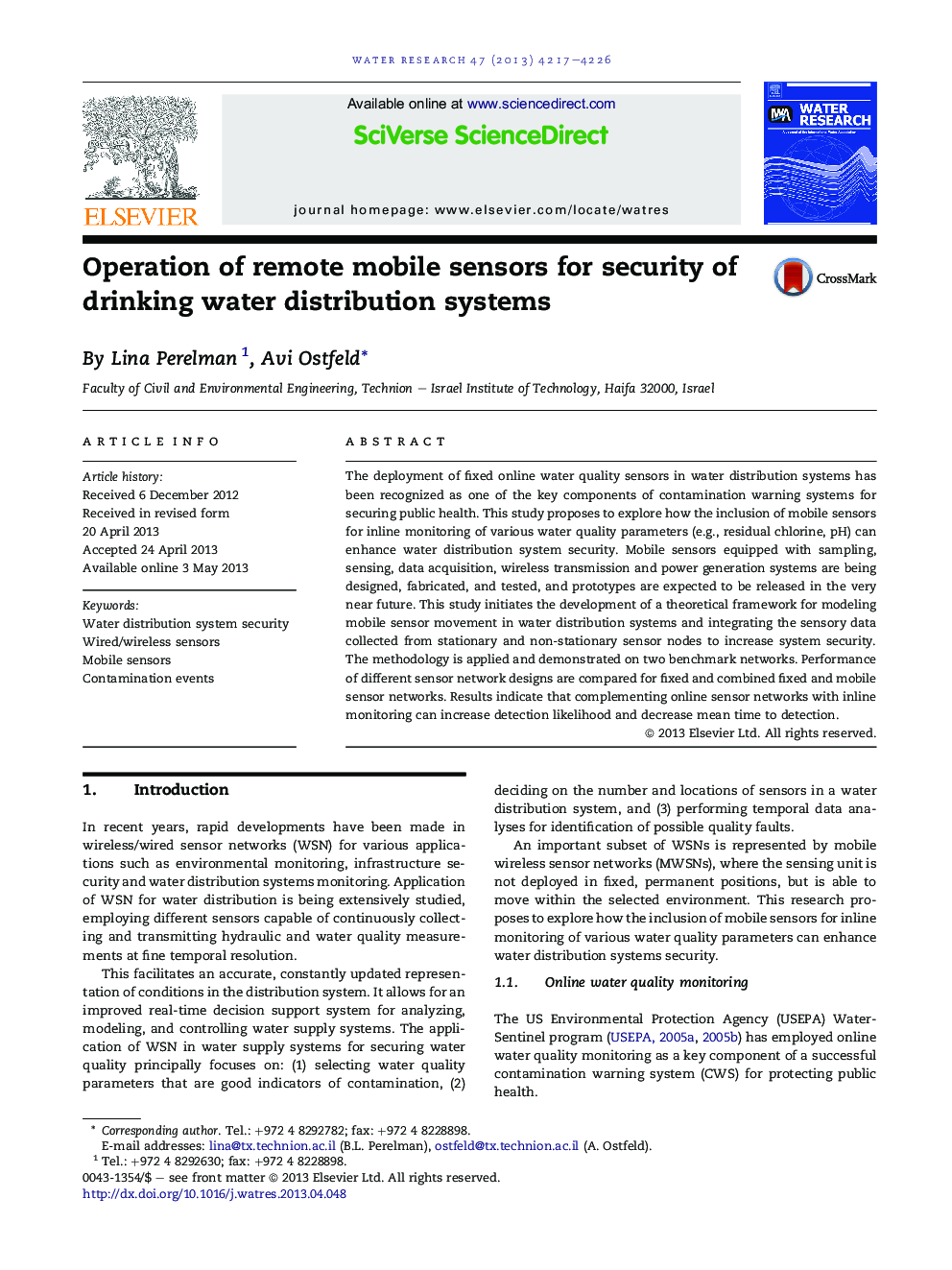| Article ID | Journal | Published Year | Pages | File Type |
|---|---|---|---|---|
| 4481970 | Water Research | 2013 | 10 Pages |
•Benchmark model for incorporating mobile sensors in water supply systems.•Methodological framework for quantifying the added value of mobile sensors.•First management model for coupling stationary and mobile sensors.•A new tool for mobile and stationary sensors operation.
The deployment of fixed online water quality sensors in water distribution systems has been recognized as one of the key components of contamination warning systems for securing public health. This study proposes to explore how the inclusion of mobile sensors for inline monitoring of various water quality parameters (e.g., residual chlorine, pH) can enhance water distribution system security. Mobile sensors equipped with sampling, sensing, data acquisition, wireless transmission and power generation systems are being designed, fabricated, and tested, and prototypes are expected to be released in the very near future. This study initiates the development of a theoretical framework for modeling mobile sensor movement in water distribution systems and integrating the sensory data collected from stationary and non-stationary sensor nodes to increase system security. The methodology is applied and demonstrated on two benchmark networks. Performance of different sensor network designs are compared for fixed and combined fixed and mobile sensor networks. Results indicate that complementing online sensor networks with inline monitoring can increase detection likelihood and decrease mean time to detection.
Graphical abstractFigure optionsDownload full-size imageDownload high-quality image (149 K)Download as PowerPoint slide
